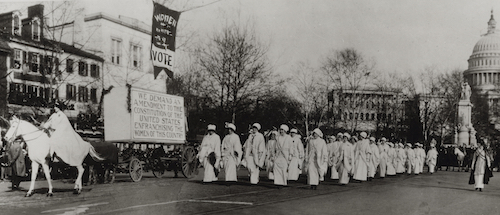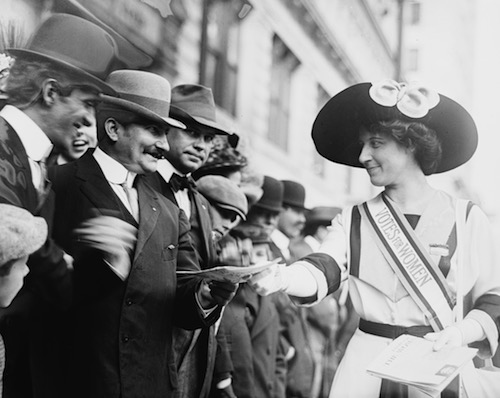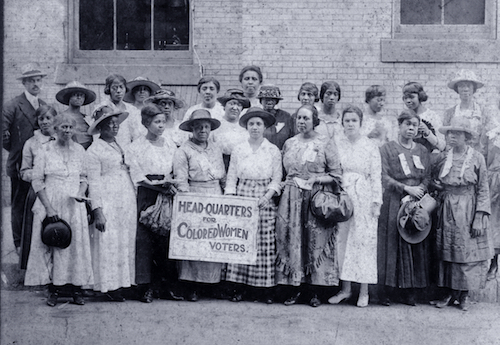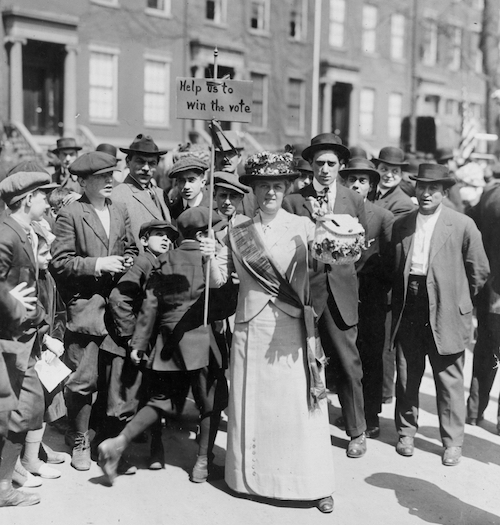Communiqué
AMERICAN EXPERIENCE “The Vote” Commemorates Women’s Vote Centennial in 2020; July 6-7
< < Back toAmerican Experience The Vote Commemorates Women’s Vote Centennial in 2020
New Documentary Explores the Arduous Battle That Finally Led to the Passage of the 19th Amendment
Narrated by Kate Burton, The Vote Features the Voices of Mae Whitman, Audra McDonald, Laura Linney and Patricia Clarkson
Premieres Monday and Tuesday, July 6-7, 2020 on PBS
American Experience The Vote, a new four-hour, two-part documentary series, tells the dramatic story of the epic — and surprisingly unfamiliar — crusade waged by American women for the right to vote. Focusing primarily on the movement’s final decade, the film charts American women’s determined march to the ballot box, and illuminates the myriad social, political and cultural obstacles that stood in their path. The Vote delves into the controversies that divided the nation in the early 20th century –– gender, race, state’s rights, and political power — and reveals the fractious dynamics of social change. Written, directed and produced by Emmy Award-winner Michelle Ferrari and executive produced by Susan Bellows and Mark Samels, The Vote premieres Monday and Tuesday, July 6-7, 2020, 9:00-11:00 p.m. on American Experience on PBS, PBS.org and the PBS Video App.

The documentary is part of the PBS Trailblazers summer programming lineup honoring the 100th anniversary of the passage of the 19th Amendment of women’s suffrage. The series is narrated by Kate Burton and features the voices of the unsung warriors of the movement: Mae Whitman (Alice Paul), Audra McDonald (Ida B. Wells), Laura Linney (Carrie Chapman Catt) and Patricia Clarkson (Harriot Stanton Blatch).
“The hard-fought campaign waged by American women for the right to vote was a truly transformative cultural and political movement, resulting in the largest expansion of voting rights in American history,” said executive producer Susan Bellows. “It’s also a story that has usually been reduced to a single page in the history books. The Vote restores this complex story to its rightful place in our history, providing a rich and clear-eyed look at a movement that resonates as much now as ever.”
“CPB is proud to support American Experience which always gives us the story behind the stories that shaped our nation,” said Pat Harrison, president and CEO of CPB. “The Vote is storytelling at its finest, affirming that to achieve justice for all requires personal sacrifice, courage and persistence.”

“In 1920, the 19th Amendment to the U.S. Constitution gave women the right to vote.” It is an axiom of American history; yet seldom has an axiom more thoroughly obscured reality. Although rightly regarded as a milestone for both American women and American democracy, the 19th Amendment was not quite the simple turning point it is generally perceived to be. Millions of women voted before the amendment and millions more were prohibited from voting after it, particularly African American women in the South. Nor was the ballot a favor bestowed upon women by an enlightened, progressive society. The right to vote was, in fact, fought for and won –– by three generations of American women who, over the course of more than seven decades, not only carried out one of the most sustained and successful political movements in all of American history, but were also the first to employ the techniques of nonviolent civil disobedience that later would become the hallmark of American political protest.
From the moment the clamor for woman suffrage first was raised in the United States, in the 1840s, the question was how the vote would ever be won. Resistance to women’s participation in the political sphere came from every quarter of American society –– from political machines eager to maintain their power, industrial interests fearful for their profits, even many women, who were convinced that wielding the ballot would somehow diminish their influence in society. Compounding the opposition, from the late 19th century on, was the poisonous legacy of Reconstruction and the determination of the former Confederate states to preserve white supremacy, in large part by barring African Americans from the polls.

As of 1909, despite six decades of relentless struggle, suffragists could point to little in the way of progress. Just four states had extended the franchise to women; the federal woman suffrage amendment –– introduced in the Senate in 1878 –– had virtually no support on Capitol Hill; and most in the first generation of activists had gone to their graves without casting a ballot. What had begun as a crusade of the few, however, had become a mass movement –– and their collective impatience was mounting.
As suffragists attempted to navigate the treacherous shoals of the national political scene, time and again principle was sacrificed in the name of pragmatism. Unfolding after the Civil War, when racism was both “a political fact and a political strategy,” said historian Martha Jones, the crusade for woman’s suffrage mirrored its historical moment. When expedient, white suffragists proved willing to accommodate its pervasive and deeply pernicious politics of exclusion. The Vote engages this troubled history directly –– underscoring the contributions of women of color to the struggle, the challenges of coalition-building in a fundamentally unequal society, and most importantly, the significant limitations of the 19th Amendment.
“The lengths to which women had to go in their pursuit of the ballot will likely come as a surprise to most viewers,” said writer, director and producer Michelle Ferrari. “How many people are aware that suffragists were the first Americans to picket the White House? That those women were jailed, went on hunger strikes and were force-fed by authorities? And that the techniques of non-violent civil disobedience, which we usually associate with the Civil Rights Movement, were employed first by women fighting for the right to vote?”

Dramatic and thought-provoking, The Vote is, at its core, a story about power –– “who has it and who doesn’t want to give it up,” said constitutional lawyer and writer Michael Waldman. “We’re still fighting over who has that power.”
In addition to the documentary series, American Experience will be launching She Resisted, an immersive, interactive website that explores the suffrage movement’s strategies through its most powerful images, brought to life through the striking dimension of color. By meticulously restoring color to archival stills and the upscaling and colorization of historical footage, She Resisted will offer a heightened immersive experience of the vision, perseverance and radicality of the women who won the vote.
Part One
Part One traces the rise of suffrage militancy, a direct-action approach to politics inspired by Britain’s notoriously militant suffragettes. First introduced in New York by Harriot Stanton Blatch, the daughter of women’s rights pioneer Elizabeth Cady Stanton, and later championed by Alice Paul, a well-educated, singularly-driven Quaker of the movement’s third generation, the new, “unladylike” tactics heightened the movement’s visibility, as thousands of American women took to the streets to boldly demand their right to full and equal citizenship. During this time, the question of suffrage for African American women, already active in the movement, was seen as a liability in securing the full support of women and men in the former Confederacy. By 1911, “votes for women” had become, as one journalist noted, “the three small words which constitute the biggest question in the world today.” While galvanizing to many, such radical action was also divisive, stiffening the opposition and threatening to undermine the movement’s credibility.
Part Two
Part Two examines the mounting dispute over strategy and tactics, and reveals how the pervasive racism of the time, particularly in the South, impacted women’s fight for the vote. Stung by a string of bitter state-level defeats in the fall of 1915, the suffragists decided to concentrate their energies on the passage of a federal amendment. One faction, under the leadership of the National American Woman Suffrage Association’s President Carrie Chapman Catt, was determined to pursue a moderate course and work within the political system, while another, Alice Paul’s National Woman’s Party, deployed ever-more confrontational and controversial methods of protest. The two efforts nevertheless pushed the movement to its crescendo in tandem, and forever transformed the politics of social change in America.

